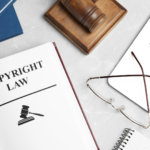The process of picking a jury is called Voir Dire. Picking a jury is a very important step and requires skill and experience. Most lawyers will tell you that the way they pick a jury does not win cases, but it can certainly lose cases if not done correctly. Each lawyer may have a unique style in choosing the best jurors to hear and decide the case.
On the day of a trial the court brings in a large number of potential jurors who have been selected from the voting rolls or driver's license information or some other similar government list. Depending on the court, they usually bring in about 50 potential jurors. Those jurors are assigned numbered seats in the courtroom.
The process begins by the judge asking certain basic questions to make sure that all of the potential jurors meet the minimum qualifications to be a juror. These minimum qualifications may include a requirement that a juror be at least 18 years old, a citizen of the United States, and a resident of the county or parish where the case is being tried for some period of time, usually one year. The judge may also ask if anyone knows the attorneys, parties or potential witnesses who will be involved in the trial.
Once the judge concludes the brief questioning, the plaintiff's lawyer is allowed to question the potential jurors. Most courts will call twelve names from the fifty potential jurors seated in the courtroom. Those individuals are asked to come sit in the jury box, where the lawyer's questioning will proceed.
Your lawyer will have a good idea of what type of person he is looking to hear the case before the trial begins. For the plaintiff, you usually want someone who is liberal-minded who has no problem awarding money to victims of personal injury. Thus, the plaintiff's lawyer will question the potential jurors on their feelings about lawsuits and people who sue. He will also want to know if any of the potential jurors have ever been sued or sued anyone previously. He will also want to know if they have ever previously sat on a jury and if so, what verdict did they render.
The plaintiff's lawyer will not want people who believe in tort reform or people who do not believe in awarding damages for pain and suffering and mental anguish. He will also try to determine the potential jurors' life experiences through careful questioning, which will give him a better idea about that person's ability to fairly decide the case.
The defense attorney generally wants the opposite type of person that the plaintiff is seeking. They want someone conservative, who does not believe in lawsuits and who will not award much, if anything for pain and suffering and mental anguish.
Most states allow each side 6 challenges or strikes to eliminate unwanted jurors for any reason (other than race). Each side may also ask the judge to eliminate jurors for cause. However, the judge has the sole discretion as to whether the reason given is sufficient to amount to a cause to be excused. The lawyers and the judge will decide which jurors are eliminated and which are acceptable to the parties outside of the hearing range of the jury.
Once the initial twelve jurors are taken through this process, then additional people are asked to come sit in the jury box and the process is repeated until twelve jurors are finally chosen. This usually takes some time because each side will exercise their right to strike or eliminate jurors and few are remaining of the original twelve called to the jury box.
The ideal jury for both sides is one that will decide the case on the evidence and law given to them by the judge, even if they disagree with the law or the evidence personally. Theoretically, the process should be free from personal bias. However, as a practical matter each of us will draw on our own biases and experience to decide the case. This is why it is so important for your lawyer to carefully question the potential jurors to expose any bias or reasons why they may not decide the facts of this case in a fair manner.
Contact us today for a Free Consultation





